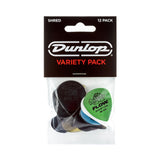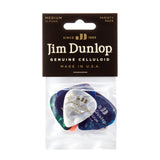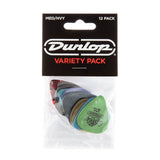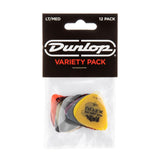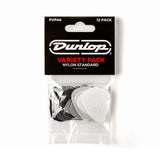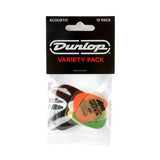If your guitar sounds out of tune when you play, despite you having just tuned it up, chances are you need a guitar intonation adjustment. It’s a common complaint for guitarists, an open G chord sounds bang on but as soon as it’s time to lay down some lead licks, suddenly it all sounds completely wrong.
In Part 5 of our Guitar Setup Guide we’re taking you through all the steps necessary to set your intonation correctly. This aspect of guitar setup is one of the more crucial steps you’ll take, and can often deliver a marked change if it’s never been done on your guitar before. It's also incredibly simple to put into action, with the caveat that it takes time to do right! If you’re just joining us, you'll need to make sure your guitar is playing its best by starting at Part 1 of the Guitar Setup Guide.
Guitar Setup EssentialsThe best tools for your guitar are a necessity, not optional. Any serious craftsperson looks after their tools, and that applies to musicians too. Ensuring your guitar is in perfect condition delivers peak performance and prevents you from suffering the ignominy of failures on stage, in the studio, or even at home.
- Guitar Tuner
- Allen Keys (Hex Wrenches)
- Ruler
- Nut Files
- Strings
- String Cutters
- Fretboard Oil
- Fret Polish
- Cleaning Cloths
- Screwdriver
- Body Polish
- Workbench Mat
- Neck Rest
Your guitar intonation refers to how in tune your guitar is across the length of your string. A properly intonated guitar will be bang on at the 3rd fret and at the 15th, ensuring that no matter where you fret your chords or play your riffs and licks, you're in perfect sync with the rest of the music.
Every time you fret a note you change the length of your guitar string, which often causes subtle changes in the pitch of the notes. A small change in pitch is normal, but if it’s badly out, this will result in dissonant sounding notes and chords. You'll tend to find this is more pronounced higher up the fretboard, and can be a particular headache if you’re playing with other musicians or tracking in the studio.
When to Intonate?A low action can often help prevent intonation issues, so if you haven't already, look to Part 2 of the Guitar Set Up Guide for more help before you start making this adjustment. That said you’ll probably need slight adjustments to your intonation every time you change your strings, to account for stretching over time. If you’re changing your string gauge then you will definitely need to adjust the intonation to account for the diameter of the new set of strings.
Setting Intonation on GuitarAdjusting your intonation is a relatively simple task, however as with pretty much every guitar setup adjustment we’ve talked about thus far, taking your time is key. Your guitar is made of many parts, so give it time to react, else you’ll find yourself having to go back on the changes you’ve made.
You’ll need a guitar tuner for this part, a clip on or pedal tuner works best here. Phone tuners are great for when you need a quick tune up on the move, but we wouldn’t recommend it here where we’re making fine adjustments.
Step 1 - Check the PitchYou can check how in tune your guitar is by playing the 12th fret harmonic on your lowest string. Now you can fret the string at the 12th fret and play again. Compare the pitches of both the harmonic and the fretted note to determine whether an intonation adjustment is required. We’d recommend using a medium pick attack when you do this, as picking too soft or too hard will give you inaccurate readings.
If the notes are both perfectly in tune then you can move onto the next string, however more often than not the fretted note will be either sharp or flat, in which case we’ll need to move onto the next step.
Step 2 - Changing String LengthNow we need to make the adjustment to compensate for whether the fretted note was sharp or flat. Depending on the guitar you have this is usually adjusted by turning a screw on the bridge, but there are various bridge styles all with slightly different ways of making the adjustment.
If your fretted note is flat, then you need to move the saddle closer to the headstock, if it’s sharp, then the saddle needs to come back towards the bridge. When you’re doing this ensure you only make 1/4 turns, tuning the guitar back to pitch after the adjustment and checking again between the harmonic and fretted note at the 12th fret.
Remember “flat forward, sharp back”.
Strat Style Bridges
On Strat style bridges this is usually on the back end of the bridge and requires a Philips head screwdriver to adjust.
Tune O Matic Style Bridges
On Tune-o-Matic style bridges you’ll find it on the front or back of the saddles depending on the design, more often than not these require a flat head screwdriver.
Wraparound Style Bridge
On a Wraparound bridge you've got slightly less flexibility when adjusting the intonation, accessible via two grub screws that go though the saddle and bridge posts. As you can't adjust the saddles individually, you may have to compromise with just how in tune the guitar is, getting it as close as you can with the adjustment available.
Step 3 - Rinse and RepeatYou will now need to repeat this process for every string, it can get quite tedious but trust us, it’s worth the effort! Depending on how far out your intonation is, you may need a full turn or more of the saddle screw to get it back in tune, so don’t fret if it’s taking a while.
It’s also important to note you may not be able to get things perfectly in tune all across the fretboard depending on the guitar. This is in the nature of the instrument though, so as long as it’s in tune for the majority of the string length, you shouldn’t run into major issues when you’re playing.
Finally, it's always worth checking how the notes are sounding beyond the 12th fret too. Fret at the 17th, 19th, 21st and 22nd frets to make sure you're in tune here too. Bear in mind it may not be possible to get every note perfectly in tune all across the neck, so you may need to make a compromise if you're the sort of player who lives higher up the fretboard.
In ConclusionA simple task, albeit one that takes a lot of time time, adjusting your guitar intonation can have a massive effect on the sound of your guitar taking your playing from bedroom warrior to studio pro. When you combine this simple adjustment with the rest of those in our Guitar Setup Guide, you’ve got yourself the knowledge to make impactful changes to way your guitar plays, which will further your enjoyment of the instrument itself.
Check out all our Guitar Hardware and Cleaning & Maintenance Tools.
More in This SeriesPart 1 - Truss Rod Adjustment
Part 2 - Adjusting the Action
Part 3 - Know Your (Guitar) Nuts
Part 4 - Keeping Things Clean
Part 5 - Intonation Adjustment
Part 6 - Pickup Height
















